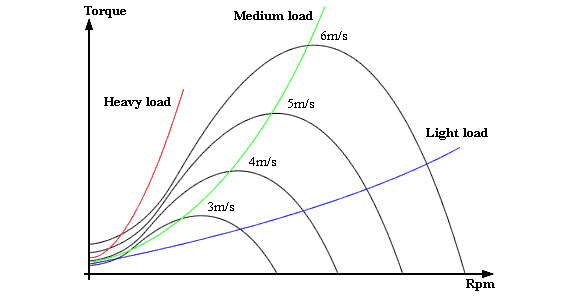Today, the world has highly attuned to energy sources that result in the least possible negative impact on the planet and its atmosphere while yielding sufficient amounts of power. In this regard, many have sought to examine the level of efficiency that can achieved from reliance on wind turbines for power generation and have come up with interesting findings.
The wind turbine is a simple rotary appliance that is built to harness power from the wind. It basically converts the wind's kinetic energy into mechanical energy and then uses a generator to convert this into electricity. Efficiency on the other hand can basically be defined as the ratio of energy input to electrical output. Therefore, in order to determine wind turbine efficiency, it is important to determine how much of the wind's energy is successfully converted into electrical energy, factoring in all variables.
The oldest wind turbines were built using a very simple design based on the windmill. This design resulted in the generation of a reasonable amount of power but it had a relatively low efficiency. It basically operated on the rule that moving air has energy that can be captured and converted. This made the models effective for small scale use.

How to choose a Wind Turbine?
But the modern design has incorporated alterations on a number of aspects including the blade material, design and even number. Instead of using steel, they now utilize light aluminum. Modifications were also made to the turbine size in order to maximize on wind interception.
The efficiency of these wind turbines was also improved by increasing the height because the velocity of wind is the first factor that comes into play. The higher the velocity, the better; and because the air at higher altitudes experiences less interference to its movement, then the higher up a turbine is, the greater the likelihood of having a high efficiency.
Wind turbines will however never have 100% efficiency and to some extent, this is to our advantage. After energy is harvested, there has to be some velocity in the remaining air to get it out of the way in order for more air to come in. And therefore, in order for this contraption to function, it has to leave some energy in the air.
A turbine can also only have its optimum efficiency levels under the conditions for which it is designed. If it is made with 45% efficiency at wind velocity levels of 20 Mph, then any variation of wind velocity translates to lower efficiency.
The ideal wind turbine also has to ensure that the cost of producing energy from it is a lot lower than its output in order to make it a beneficial venture. Taking into consideration these factors implies that even the most efficient wind turbine has to operate at a much lower level than its overall capacity. This is usually about 50% but it still translates to a highly cost-effective energy source.
This means that the cons of this energy-production technique should act, not as a damper, but as a motivating factor. Furthermore, the only way to improve the efficiency of this method is by researching further into it and conducting more experiments on the wind turbine.